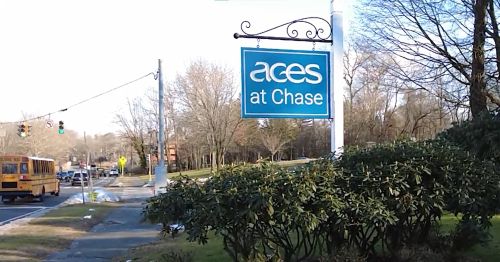-
Our Agency
- About Us
- Calendars
- Contact Us
-
Directions
- ACCESS
- ACES at Chase
- ACES International Preschool and Childcare Center
- ACES Transportation Services
- Center for Autism Spectrum and Developmental Disorders
- Central Office
- Educational Center for the Arts
- Educational Technology
- Little Theatre on Lincoln Street
- Mill Road School
- Network Services
- Staff Development / Administration
- Village School
- Whitney High School North
- Wintergreen Interdistrict Magnet School
- Human Capital Development
- Education Foundation
- News / Press
- Publications
- Request for Proposals
- Employment
- Events & Workshops
- Referrals
-
Schools & Programs
-
Special Education Schools
- Center for Autism Spectrum and Developmental Disorders
- Mead Elementary School
- Mill Road School
- Village School
- Whitney Academy EXPLORE & CREATE
- Whitney High School North
-
Magnet Schools
-
ACES at Chase
- About Us
- ACES at Chase: History & Origins
- Admissions
-
Student and Family Portal
- Breakfast and Lunch Menus
- Cancellations, Delays, and Early Dismissal
- Community Health Center
- Dress Guidelines
- Family Teacher Organization (FTO)
- Health Office
- Principal's Corner
- Monitoring Grades: PowerSchool Parent Portal
- Quick Links
- Student Handbook
- Summer Reading and Math
- Technology & Digital Citizenship
- Virtual Suggestion Box
- Document Library
- Contact Us
- Back to ACES
- Educational Center for the Arts
- Wintergreen Interdistrict Magnet School
-
ACES at Chase
- Alternative Education
- ACES Early Head Start
- ACES International
-
ACES International Preschool and Childcare Center
- About Us
- ACES International Preschool and Childcare Center Donations
- Admission Interest
- Meet the Staff - Newtown Center
- Meet the Staff - Woodbury Center
- Calendar
- Contact Us - Newtown Center
- Contact Us - Woodbury Center
- Family Portal
- Enroll Now: ACES International Preschool and Childcare Center Newtown Location
- Back to ACES
- ACES Open Choice
- Family and Community Engagement
- Magnet School Parent Choice
- School-Based Services
-
Special Education Schools
-
Services
- ACCESS Adult Vocational Services
- ACES Insurance Collaborative
- ACES UP Renewable Energy Solutions
- Alternate Routes to Certification
- Business Partnership Opportunities
- Center for Safe Schools
- Clinical Services
- Educational Technology
- Facility Rental
- Fingerprinting
- International Programming
- Marketing and Communications Services
- Network Services
- Professional Learning
- Regional Education Councils
- Regional Special Education Transportation
- Speech and Language Services
- Transportation
- World Language Services
- Find
« Back to News List
By Clare Dignan
« Back to News List
Construction starts on new ACES special education campus in Hamden
December 14th, 2017
.jpg)
Construction starts on new ACES special education campus in Hamden
By Clare Dignan
Friday, December 15, 2017

Rendering for the new ACES campus to be built at 130 Leeder Hill Road in Hamden. Expected completion is fall 2019.

Local officials and ACES board members at the ground breaking ceremony for the ACES campus to be built at 130 Leeder Hill Road in Hamden, including Mayor Curt Leng; Norman Hicks, ACES governing board chairman; Dr. Thomas M. Danehy, executive director of ACES; Anthony Rescigno, president of the Greater New Haven Chamber of Commerce and Glen Peterson, education division director of the Connecticut State Department of Education.
HAMDEN — Construction for a new ACES campus is under way, which will consolidate two special education programs into one new location, where a ground-breaking ceremony was held this week.
With the construction of the new facility, ACES is moving all programs from the three buildings on Skiff Street to the future site, which will open fall 2019. The school will hold new specialty laboratories, including occupational therapy rooms, sensory and aqua-therapy rooms, assistive technology training spaces, as well as vocational programs spaces including art, shop, and video studios.
The building at 130 Leeder Hill Drive will be the new home of ACES Whitney High School East/West/CREATE and ACES Whitney High School North campuses and the finished project will boast about 140,000 square feet to accommodate 300 students.
“This building is specifically designed for the student needs we have, so it really allows us to enhance the educational opportunity for our students,” ACES Director of Construction Services Tim Gunn said.
ACES provides academic and vocational programs for special needs students who have a range of cognitive, physical, behavioral, language and medical challenges. The school serves students 14 to 21 years old and places an emphasis on teaching and assisting with students’ transitions to independent life and work. It provides services for more than 30 school districts in South Central Connecticut, primarily for special needs students.
“Our program has grown and the opportunities we offer and the needs of our students, too, so we’re going to be better able to meet the needs of our students in this environment,” ACES teacher Nicole Flaherty said of moving to the new building. She works with students teaching life and vocational skills as well as functional academics, such as money counting to be able to make purchases. “Because we’re community based, the students get authentic real-life experiences, so the things we’re practicing in the classroom they’re able to generalize and use them out in the community,” she said. “There’s a lot of real-life learning opportunities to develop independent living skills.”
Silver/Petrucelli + Associates is the architectural firm handling the project, which is expected to cost $60 million. The Leeder Hill Drive building will be “renovated as new,” meaning the building will be fully gutted, have all new mechanical systems, a new facade, gymnasium, classrooms and site improvements, lead project manager Dave Stein said. It will meet the energy efficiency standard for high performance buildings and use sustainable materials, he said.
“Right now we’re in three different buildings and it’s difficult when students need to go from one building to another,” said ACES Transition Coordinator Carolyn Nelson, who works with students post graduation as they transition to finding jobs. “The accessibility of having everyone under one roof is a major factor.”
Many programs at the East/West and North campuses are also limited by their space, music therapy teacher Lynne Patnode said, including the classes she runs. At the current campuses, Patnode said the only space she has for music practice is the cafeteria, where they’re constrained by lunch time and other noise distractions in the space. When the campuses move to the new building, the music therapy program will have a 1,500 square feet of dedicated acoustic space, along with a sound recording booth and new equipment, she said, which “will make a huge difference.”
Similarly, the sensory and aqua-therapy programs are also limited in how much they can serve students, ACES physical therapist Sue Condren said. Teachers and students currently need to travel to the elementary school’s aqua-therapy room, a program that especially helps students who are wheelchair bound, she said, but the Leeder Hill Road campus will provide students with a larger aqua-therapy room of their own.
“A school isn’t just a building and it’s important to remember it’s not just about the facility,” said Glen Peterson, education division director of the Connecticut State Department of Education. “It’s the relationship, the administrators, the teachers, it’s the aids, the custodians, cafeteria workers and really it’s the students and the families for who the school is being built.”












